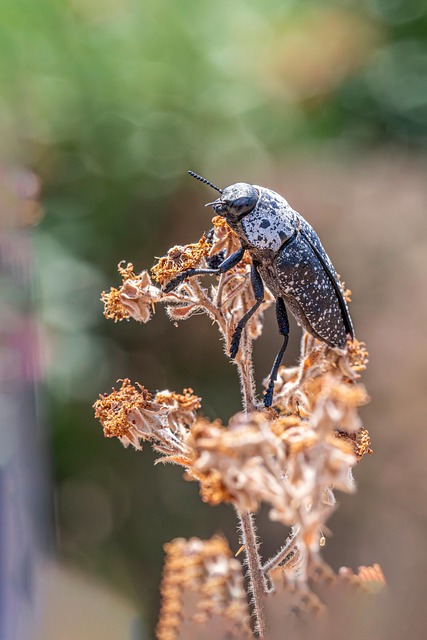Drugstore beetles (Stegona lineata) are household pests that infiltrate through cracks, lay eggs in dark areas, and feed on starch-rich materials. Their life cycle includes egg, larva (burrowing into items), pupa, and adult stages. Effective pest control involves sealing entry points, improving ventilation, using insecticides, and promoting natural predators to combat all life stages. Regular inspections, sanitation, and modification of storage conditions are key preventive measures for year-round protection against drugstore beetle infestations.
Seasonal drugstore beetle prevention programs offer year-round protection against these insidious pests. Drugstore beetles, known for their ability to breed rapidly and cause significant damage, can infiltrate your home through seemingly hidden entry points. This article delves into the world of drugstore beetle behavior, identifying common breeding grounds, and exploring both non-chemical and chemical strategies for effective pest control for drugstore beetles. By understanding these methods, you’ll be equipped with the knowledge to safeguard your home all year round.
Understanding Drugstore Beetles: Behavior and Life Cycle
Drugstore beetles, scientifically known as Stegona lineata, are a common household pest that can quickly infest and damage stored goods. Understanding their behavior and life cycle is crucial when developing effective pest control strategies. These beetles have a preference for materials high in starch or carbohydrates, making them attracted to items like dried food, grains, and even paper products. They can enter homes through small cracks and crevices, often laying eggs in dark, undisturbed areas.
The life cycle of drugstore beetles involves several stages: egg, larva, pupa, and adult. After emerging from the egg, larvae feed on nearby materials, burrowing into items to create tunnels. This stage is critical for pest control as it’s when they become most vulnerable. Once mature, adults can fly and are attracted to light, often entering homes through windows or doors. They then seek out suitable nesting sites, ensuring the cycle begins anew. Effective pest control for drugstore beetles involves addressing all life stages, from sealing entry points to utilizing specific insecticides targeted at each phase.
Identifying Common Entry Points and Breeding Grounds
Identifying where drugstore beetles enter and breed is a crucial step in implementing effective pest control for drugstore beetles. These tiny invaders often find their way into homes through small cracks, gaps around doors and windows, or even unscreened vents. Once inside, they’re drawn to dark, cluttered spaces, making storage areas, closets, and attics prime breeding grounds. By understanding these common entry points and habitats, homeowners can take proactive measures to seal off potential routes and reduce favorable conditions for beetle proliferation. Regular inspections are key to early detection, allowing for swift intervention before a full-blown infestation occurs.
Drugstore beetles prefer warm, humid environments, so addressing moisture issues is essential in deterring them. Ensuring proper ventilation and promptly fixing any leaks or sources of excess humidity can significantly hinder their ability to thrive indoors. Additionally, keeping spaces well-lit, especially areas where items are stored for extended periods, can help deter these nocturnal pests from setting up shop.
Year-Round Prevention Strategies: Non-Chemical Approaches
In addition to traditional chemical treatments, implementing year-round prevention strategies is crucial for effective pest control for drugstore beetles. Non-chemical approaches focus on creating an inhospitable environment for these pests, minimizing their access points, and promoting natural predators. One key strategy involves maintaining excellent sanitation practices, particularly in areas prone to beetle infestation, such as storage rooms and warehouses. Regularly cleaning and disinfecting surfaces, vacuming floors, and promptly addressing any spills or debris can significantly reduce beetle populations by eliminating their food sources and hiding places.
Additionally, modifying storage conditions can be an effective non-chemical method. Ensuring appropriate temperature and humidity levels makes environments less appealing to drugstore beetles. Using sealed containers, especially for items like spices, herbs, and other dry goods, also serves as a physical barrier against these pests. Encouraging natural predators like spiders, ladybugs, and certain bird species can further aid in beetle prevention by providing biological control, making it an eco-friendly option for pest control for drugstore beetles.
Chemical Treatments for Drugstore Beetle Control
Chemical treatments offer a powerful solution for effective drugstore beetle control, especially as part of a year-round prevention strategy. These methods involve applying specific chemicals that target and eliminate adult beetles, larvae, and eggs. Professional pest control services often employ insecticides with long-lasting effects, ensuring continuous protection against these persistent pests.
When implementing chemical treatments, it’s crucial to focus on targeted areas like storage rooms, closets, and any spaces where drugstore beetles might breed or hide. Following the instructions of the chosen insecticide carefully is essential for safety and optimal results. Regular applications during peak seasons can significantly reduce the risk of infestations and provide much-needed peace of mind for homeowners and businesses alike in their pest control for drugstore beetles efforts.
Implementing a comprehensive, year-round strategy is key to effective pest control for drugstore beetles. By understanding the beetle’s behavior and life cycle, identifying common entry points, and utilizing both non-chemical and chemical treatments, homeowners can prevent infestations and protect their belongings. Regular maintenance and vigilance are essential to keep these pests at bay, ensuring a safe and pest-free environment.
